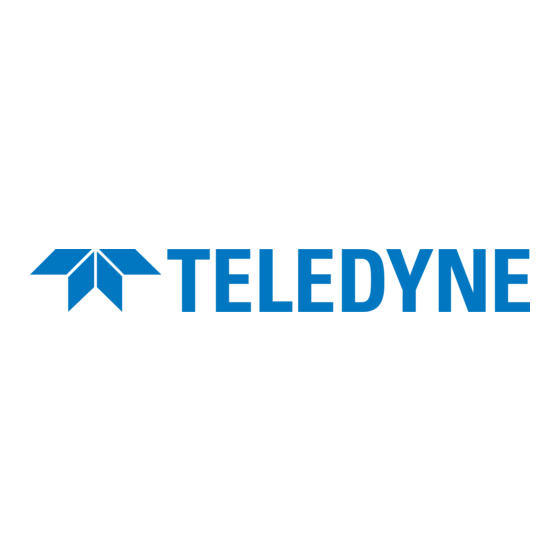
Advertisement
Quick Links
Z-TRAK FAMILY OF 3D SENSORS INSTALLATION AND
QUICK START GUIDE
Applies To
Z-Trak2 and Z-Trak LP2C 3D Profile Sensor Series
Overview
This application note contains information on setting up a 3D laser profile sensor for quick, basic
acquisition, covering physical setup, software setup, and basic parameter settings using Z-Expert. This
document also discusses hardware requirements and configuration.
1
continued >
Property of Teledyne DALSA. Not for publication or reproduction without permission.
Copyright 2024. All Rights Reserved.
Advertisement

Subscribe to Our Youtube Channel
Summary of Contents for Teledyne Z-Trak2 Series
- Page 1 This application note contains information on setting up a 3D laser profile sensor for quick, basic acquisition, covering physical setup, software setup, and basic parameter settings using Z-Expert. This document also discusses hardware requirements and configuration. continued > Property of Teledyne DALSA. Not for publication or reproduction without permission. Copyright 2024. All Rights Reserved.
- Page 2 Aversion response (blink reflex) will protect workers from visible lasers unless a telescope or microscope is used. Not a skin or materials burn hazard. continued > Property of Teledyne DALSA. Not for publication or reproduction without permission. Copyright 2024. All Rights Reserved.
- Page 3 Display card with GPU capabilities (essential for fluid display rendering). • Dedicated network interface card (NIC) that supports 5 GigE or 10 GigE for the 3D profile sensor, or a Teledyne Xtium2-XGV PX8 Dual or Quad port 10 GigE frame grabber. • Cat 6 Ethernet cable or better.
- Page 4 The E-STOP safety feature is enabled by default. However, IF PERMITTED BY LOCAL REGULATIONS, it can be disabled in the device configuration. continued > Property of Teledyne DALSA. Not for publication or reproduction without permission. Copyright 2024. All Rights Reserved.
-
Page 5: Install Hardware
To install the network adapter, follow the manufacturer's instructions. Some configuration should be performed after installation of Sapera LT (see Confirm Network Connection for Z-Trak Devices). Alternatively, you may use a Teledyne DALSA Xtium2-XGV PX8 Dual or Quad port 10 GigE frame grabber. Follow the installation instructions from the user manual. -
Page 6: Led Indicators
Laser LED – ON when the laser is activated, and E-STOP bypassed. Range LED – ON when actively acquiring or waiting for a trigger to start acquisition. continued > Property of Teledyne DALSA. Not for publication or reproduction without permission. Copyright 2024. All Rights Reserved. - Page 7 Confirm Network Connection for Z-Trak Devices After powering up and connecting the sensor, verify that the GigE Server icon appears in the notification area of the host computer (allow a few seconds for the Teledyne GigE Server status to update). GigE Vision Device Status...
- Page 8 Start Z-Expert Start Sapera Z-Expert from the desktop icon or from the Start menu under Teledyne DALSA Sapera LT. The Z-Expert user interface is shown below. The different panes, such as Source Explorer, Feature Browser, etc., can be rearranged. Typically, only one display window is shown: you may choose the number of display windows from the toolbar.
- Page 9 Data Output > Format > 3D Data Type = UniformX Z Acquiring Multiple Profiles (Scan) • Data output > Profiles Per Scan = 5 or more continued > Property of Teledyne DALSA. Not for publication or reproduction without permission. Copyright 2024. All Rights Reserved.
- Page 10 Refer to the Z-Trak Family of 3D Sensors User’s Manual for more information on how to optimize your network adapter for high throughput. continued > Property of Teledyne DALSA. Not for publication or reproduction without permission. Copyright 2024. All Rights Reserved.
- Page 11 2. Power up your 3D device and connect it to the host computer NIC. Wait for it to be found by the Teledyne GigE Server in the notification area, which can take a few seconds after a device has obtained an IP address.
- Page 12 Teledyne reserves the right to make changes at any time without notice. Document Number: 3D-L-AN0012 Revision Date: 2024-11-20...

Need help?
Do you have a question about the Z-Trak2 Series and is the answer not in the manual?
Questions and answers